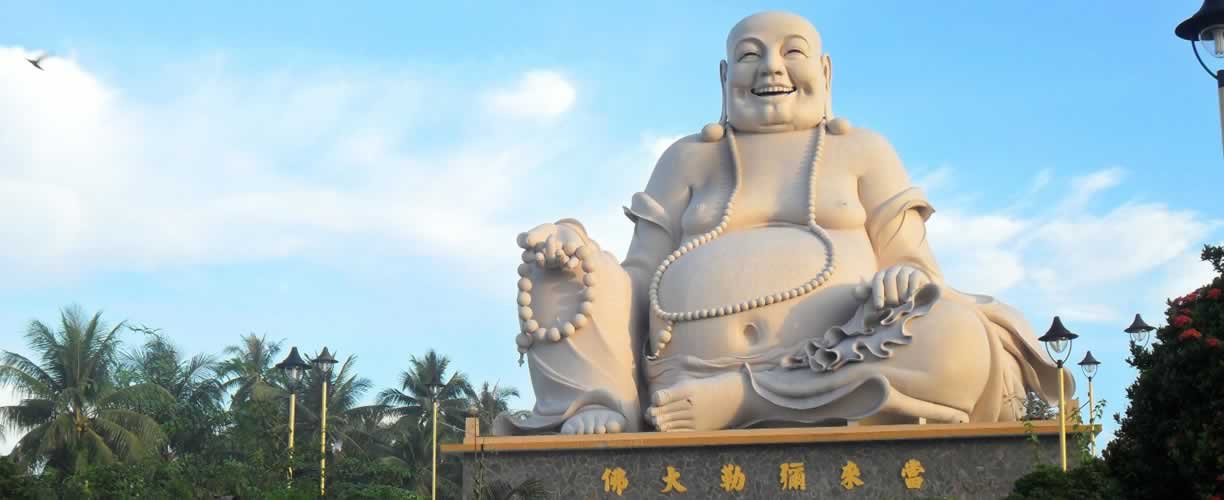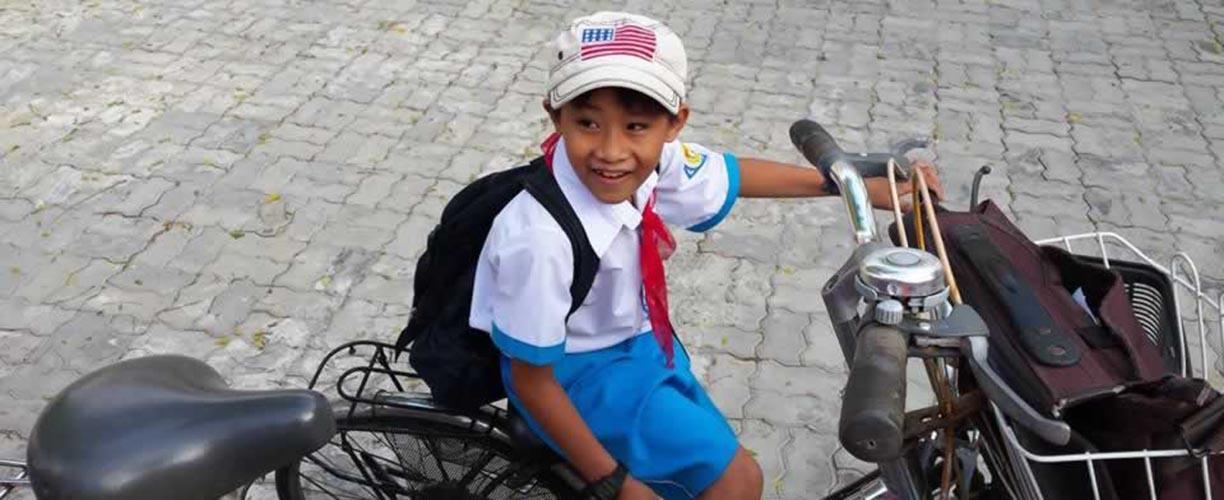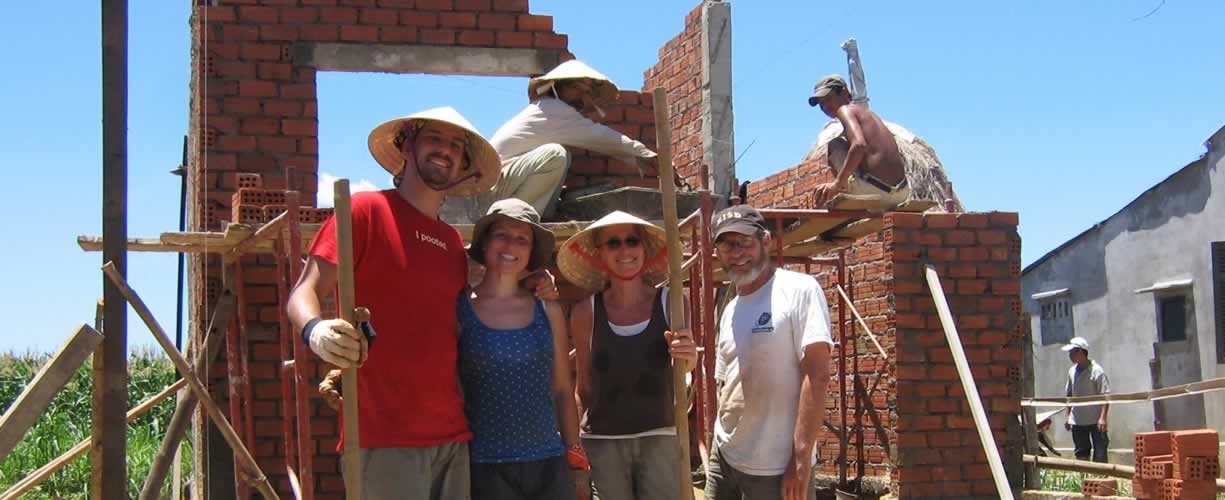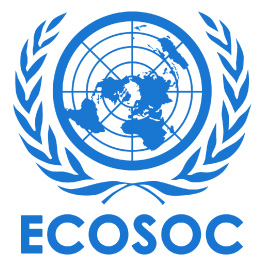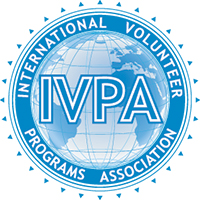The sophisticated Bronze Age Dong Son culture emerged around the 3rd century BC. From the 1st to the 6th centuries AD, the south of what is now Vietnam was part of the Indianised kingdom of Funan, which produced fine art and architecture. The Hindu kingdom of Champa appeared around present-day Danang in the late 2nd century and had spread south to what is now Nha Trang by the 8th century. The kingdom existed in part through conducting raids in the region. The Chinese conquered the Red River Delta in the 2nd century and their 1000-year rule, marked by tenacious Vietnamese resistance and repeated rebellions, ended in AD 938 when Ngo Quyen vanquished the Chinese armies at the Bach Dang River.
During the next few centuries, Vietnam repulsed repeated invasions by China, and expanded its borders southwards from the Red River Delta, populating much of the Mekong Delta. In 1858, French and Spanish-led forces stormed Danang after several missionaries had been killed. A year later, Saigon was seized. By 1867, France had conquered all of southern Vietnam, which became the French colony of Cochinchina.
Communist guerillas under the leadership of Ho Chi Minh resisted French domination during and after WWII. Ho Chi Minh's declaration of Vietnamese independence in 1945 sparked violent confrontations with the French, culminating in the French military defeat at Dien Bien Phu in 1954.
The Geneva Accords of 1954 temporarily divided Vietnam into two zones (the Communist north and the anti-Communist, US-supported south). Political and ideological opposition quickly turned to armed struggle, prompting the USA and other countries to commit combat troops in 1965. The Paris Peace Agreements, signed in 1973, provided an immediate cease-fire and signalled the withdrawal of US troops. Saigon eventually capitulated to the Communist forces on 30 April 1975.
Going straight from the fat into the frying pan, Vietnam had barely drawn breath from its war with America when it found itself at loggerheads with Khmer Rouge forces along the Cambodian borders. A protracted round of fighting eventually saw China enter the fray in support of Cambodia and the killings continued until the UN brokered a deal, with Vietnamese forces being pulled out of Cambodia in 1989. Although the Khmer Rouge continued to snipe from the borders, it was the first time since WWII that Vietnam was not officially at war with any other nation. The end of the Cold War and the collapse of the USSR in 1991 caused Vietnam and Western nations to seek rapprochement.
In July 1995 even the intransigent USA re-established diplomatic relations with Hanoi, although Hanoi initially refused to sign trade agreements with the US in 1999 (this was finalised the following year). The US, on their part, talked about normalising relations but over 25 years later there's still a lot of soul-searching, hand-wringing and post mortems going on, accompanied by a slather of angst-ridden films and a handful of unplugged guitar tunes. John McCain, on a visit to Hanoi, talked about 'the wrong guys winning the war'. Vietnam went through something of a postwar economic boom, before suffering the economic setbacks that plagued the entire region when the foreign investment bubble burst in the late 1990s. It has recently recovered part of this ground with some pundits predicting it will be the next Asian 'tiger' economy.
In 2006 Vietnam was welcomed into the World Trade Organization (WTO).
Relations have also improved with the historic enemy China. Vietnam is still overshadowed by its northern neighbour and China still secretly thinks of Vietnam as a renegade province. But Vietnam’s economic boom has caught Beijing’s attention and it sees northern Vietnam as the fastest route from Yunnan and Sichuan to the South China Sea. Cooperation towards the future is more important than the conflict of the past.
Vietnam is an active member of Asean, an organisation originally established as a bulwark against communism, and this is all adding up to a rosy economic picture. Vietnam’s economy is growing at more than 8% a year and tourists just can’t get enough of the place. The future is bright, but ultimate success depends on how well the Vietnamese can follow the Chinese road to development: economic liberalisation without political liberalisation. With only two million paid-up members of the Communist Party and 80 million Vietnamese, it is a road they must tread carefully.
Copyright 2010 Lonely Planet Publications , all rights reserved, used with permission

